The brief
Broadcastgave three companies - a freelance graphic designer, a post-house graphics department and a specialist graphics house - a grand total of four days to turn around an outline storyboard for the titles of a new four-part co-production about the history of AIDS from Paladin InVision and WGBH Boston for Channel 4 and PBS.
The Age of AIDS is billed as a definitive chronicle of the struggle to understand and defeat this disease and the brief stipulated that the titles needed to tie in with its "stark, bleak and, above all, human" mood. On a budget of£5,000 the series producer William Cran wanted a simple animated sequence that resolves into a title, which could also be used for programme breaks and as a logo on press kit hand-outs, educational materials and other forms of publicity or outreach. The sequence would be accompanied by a soundtrack of whispered or distorted voices, to underline the human nature of the tragedy. Each outfit was given a VHS of the first four minutes of the rough cut of the first episode to give an impression of mood.
Nick Robertson - the freelance designer
Robertson decided to focus on blood because it is the means by which the disease is spread. Footage of blood being pumped through veins and arteries was physically superimposed onto a series of architectural surfaces, either through digital montage or projected directly onto surfaces, rather than using computer-based packages. "This implies we can't get away from the problem whether we can see it or not," says Robertson. The contrast of moving, biological, visceral cell movement across the cold static buildings is intended to be disconcerting, he explains. The first set of surfaces would be generic domestic interiors, moving to outside locations - blood projected on pavements, walls and whole buildings - simply put together in Photoshop. Robertson created the titles type for this resolution using Letraset to achieve an imperfect, hand-made look. Cran comments: "I don't think his first design is dark enough for this subject whereas the blood-based graphic might be too grim but it's certainly the design that packs the most emotional punch."
Sumners - the post-house graphics department
Developed collectively by the Sumners graphics team, Alan O'Brien, Anthony Scott and head of graphics Lynn Nealon, Sumners' initial idea was to show people breaking up into particles of dust to represent the human race being literally blown away by the virus. This evolved into using the movement of ink in water to similar effect. Using archive images of the naked human form, the storyboard was created in Photoshop and Illustrator, with Nealon stressing that original nudes footage would be shot live for the real title sequence, using a motion control camera to capture the fluid, uncontrollable nature of the virus. After Effects and Avid Nitris would be used for the finished sequence. Cran comments: "A hauntingly beautiful image. And it certainly feels very original to me. Having said that, the present images might look a little bit too sexy. I'd look for a way to scale this back a bit. We might also want to hint at a wider spread of age and race."
Skaramoosh - the graphics specialist
"It's about representing illness and death which stems from poverty and lack of education - so you could easily offend," says Skaramoosh senior animator Phil Hope of the subject matter. His solution was to internalise the idea of a worldwide pandemic by creating a title sequence inside the human body. "I started with the idea of being inside a womb-like space; warm and very fluid with particles of dust. The image is built up by combining archive footage of dry ice photography and glitter being thrown in the air - layered together in Photoshop. I included wispy tentacles to make the images look elegant yet uncomfortable and suffocating." As the sequence develops with its eerie soundtrack Hope added 3D blood cells - designed in SoftImage XSI - dividing in time to the audio, which then start to form the countries that are the world's AIDS hot spots. Cran comments: "We're clearly thinking along the same lines as I'm planning to make blood and vessels a key element in the visual imagery of the series. I like the sombre colour values, I also like the idea of adding T-cells which look really creepy when blown up."
Why TV titles are coming back
It seems that title sequences, not so long ago considered a forgotten art, are back in vogue. The reason is that with independent producers owning the rights to their programmes there's increasing emphasis on the business of exploiting them. And when it comes to the international exploitation of programmes, the titles and ident sequences of shows such as Who Wants to be a Millionaire?and Ant and Dec's Saturday Night Takeawayare as much a part of the package that has made the show a success as their format and set design.
In today's more business-focused environment programme branding has become a bigger priority. According to The Hive's head of graphics Ben Heap it's been the biggest development in the last five to 10 years. "You can see it with broadcasters such as Five - who take their channel branding very seriously - or Big Brother's all-seeing eye. These are brands that people build relationships with."
With the Design Council's Design Index survey, published each summer, showing a strong correlation between good design and stock market performance it's little wonder that programme-makers are putting it higher on the agenda.
But anybody tempted to cash in on this new-found emphasis on programme branding maybe disappointed. Where 10 years ago a titles commission for a network show would have earned a five-figure sum, these days four figures is the norm.
For Graham McCallum, creative head at branding agency Kemistry, it's a reality that's persuaded him that titles are no longer worth the bother. Even though McCallum houses a gallery dedicated to TV title sequences from past decades in his company's premises, he's realistic about the medium's cash-spinning potential: "To be brutal there's no money in it."
He adds: "At my last company it was a huge part of our work, but 10 years ago you could earn up to£60,000 from branding. Even at the bottom end you were looking£20k-£25k. It was when we started getting calls from producers saying: 'We're asking eight companies to pitch for a major new series', and then we find out they have£5,000 to spend - it became impractical."
But not everyone takes the same view. Mike Kenny, director of Component Graphics, has refocused his company from a post house into a graphics specialist. "It's still a good business to be in," says Kenny, whose outfit has recently designed titles on Hell's Kitchenfor both Granada and Fox in the US as well as for BBC2's Full On Food. "But the days when you could get up to£100,000 on some big-budget shows are now pie in the sky," he adds.
Kenny admits there's been a definite downward pressure on budgets. "In theory the greater importance of programme rights should mean there is a greater need for attention to programme branding, but that's not necessarily been reflected in the amount people are willing to pay."
It's clear that, as with many areas of broadcasting, the cashflows in TV graphics have been hit by technological change, with falling prices of computer technology and software packages such as After Effects opening the field up to more freelance designers.
The Hive's Heap declares: "A few years ago we noticed that there was a bunch of people straight out of college working on desktop systems with Combustion and After Effects that took a big slice out of the market. It changed the nature of the business."
Kemistry's McCallum adds: "For a freelance designer with a computer and After Effects,£3,000 a week is not bad."
One such designer is Nick Robertson, who runs his own company, Wordsalad, out of a shared studio, which sets him back just£100 a month - a bit less than the overheads on your average facility's graphics department.
He's a regular on BBC arts shows such as Peter Ackroyd's London, A Picture of Britainand Around the World in 80 Treasures, but got into television work via the music industry, where he learned After Effects, Photoshop and Final Cut Pro doing tour visuals for artists such as Brian Eno.
"A simple title sequence tends to be anything between£3,000 and£5,000 - completely workable because my overheads are relatively low."
Owain Elidir, who runs his own award-winning Cardiff-based design company No.Brake, got into titles work four years ago and has done regional shows for as little as£1,500 to£2,000. "You have to keep these short and sweet - there's not much scope for ground-breaking design," he says.
But Heap is quick to point out that there's still room for bigger players who offer services that the smaller operators can't match. "What you get when you go to a facility with a graphics department is a good grader, a lot more technological investment, fast networks and the back-up of an engineering department."
"Big broadcasters don't want expert hobbyists on something like a channel rebranding - they want people they know can deliver."
Whichever route producers opt to take, the basic ground rules for getting the most out of a title sequence are the same. The most basic but most commonly disobeyed rule is: don't leave it all until the last minute.
As Ray Leek, director at specialist Interfield Design, stresses: "Time is important because it gives you the opportunity to generate more ideas. At the end of the day that means higher quality."
Winner of this year's graphic design Craft Bafta for his work on BBC2's The Long Firm, Leek adds: "If you get the opportunity to talk to the producer and director it shows that they take titles seriously."
When coming up with the titles for The Picture of BritainNick Robertson points out: "BBC arts started talking to me about titles quite early. I went on location and become very involved in the whole team, which makes for a better job."
The BBC's Jane Walker, senior creative director at the corporation's Creative Services department, adds that some of the biggest blunders with titles and idents can be eliminated with a good creative brief.
Walker recommends thinking carefully about what goes in it. "It doesn't need to be long but it should contain information on what the programme's about and what it's trying to communicate to an audience and who that audience is."
She advises programme-makers to think about titles as a shorthand version of the programme itself.
And if several designers are involved, the same core brief means there a better chance of a more cohesive end result. "The more internal consistency across titles, stings and idents the better. I'm not saying that all parts of programme branding have to look the same but it all needs to feel connected."
Putting together a huge pitch list of designers is not recommended. "You won't get many creative treatments going into much depth," she warns. "Better to go for two or three companies that will put in more time and effort."
It's also vital for the brief to include the budget and exactly what's expected in terms of add-ons - different versions for different markets for example. "That way you can price it properly," says Robertson, who adds: "The worst thing is when you start working on a brief and discover there is something else to do, and then something else. I've heard that some indies can take the piss."
Producers should try and be as precise as possible about what they are looking for is Heap's advice. He warns that the most difficult clients are those that are too vague. "They say things like: 'We want it to look contemporary - we'll leave it up to you' - which isn't much help. We do a lot of second guessing of what people really want when the kind of titles they suggest aren't appropriate."
Ultimately the aim of titles is to get the programme noticed - or provide "cut through" in marketing jargon. But Heap insists it's not all about standing out from the crowd. "Remember that daytime lifestyle shows or sports programmes have a their own definite visual syntax when it comes to titles - they have to both fit in and stand out at the same time."


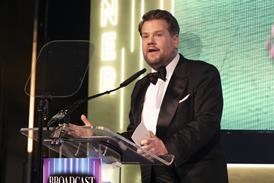
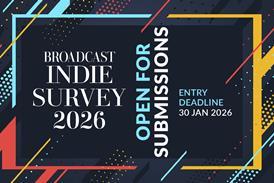



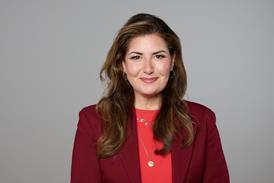
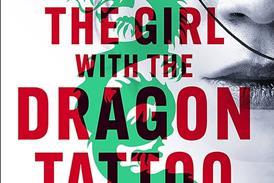

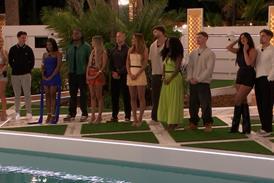
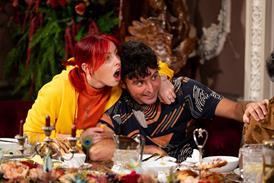








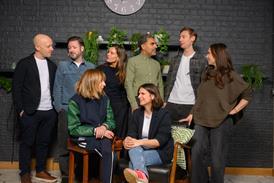
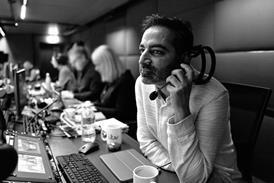
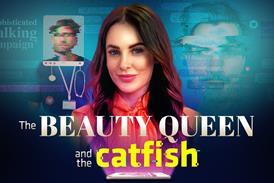



No comments yet